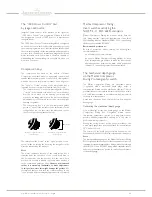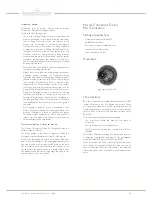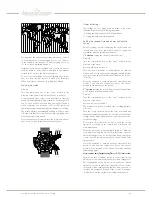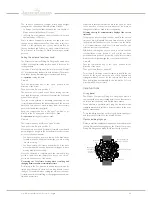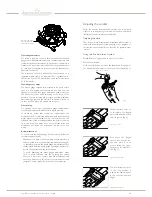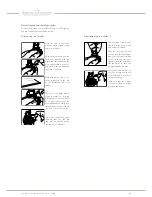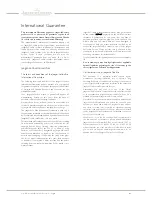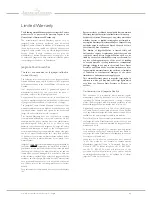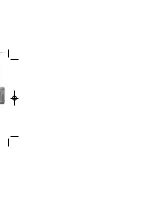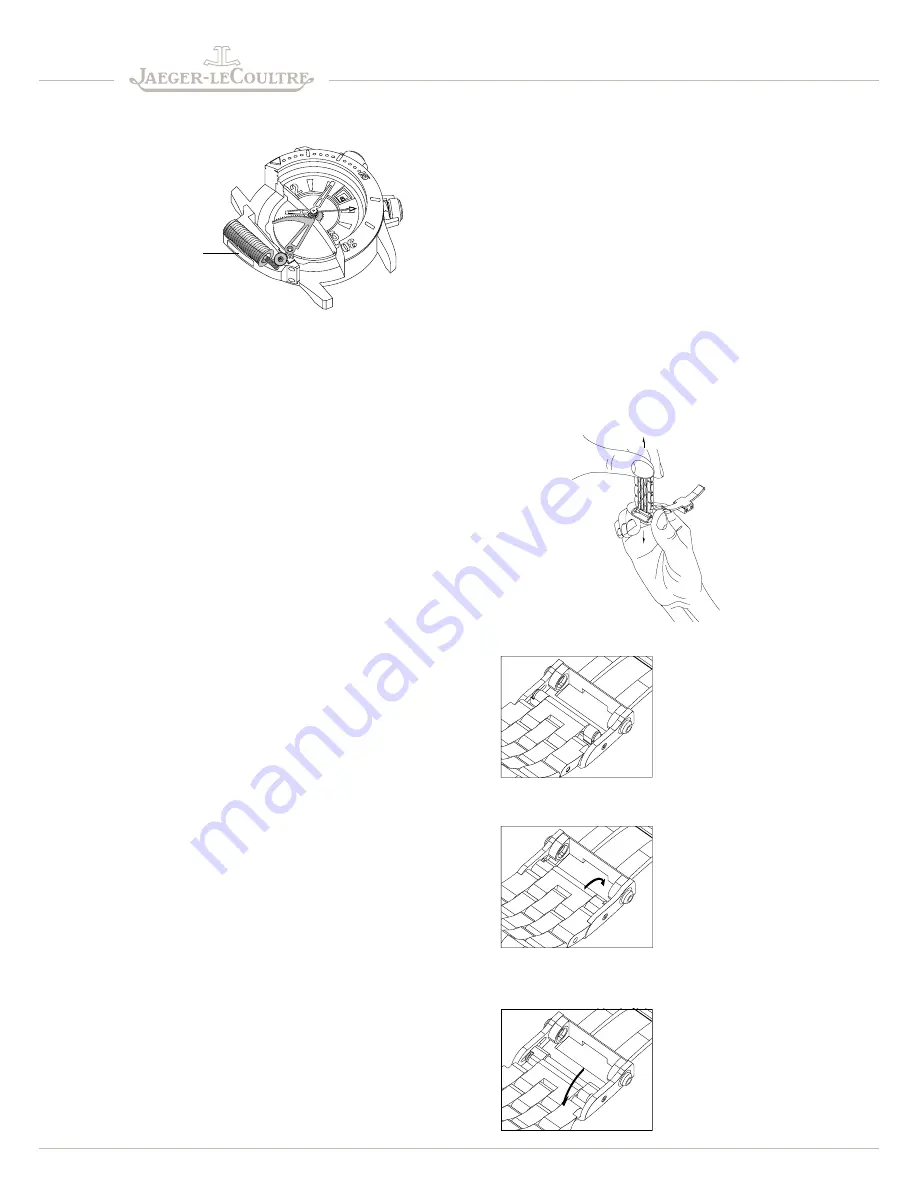
Operating underwater
No action is required on your part is required for the depth
gauge to work underwater. It reacts to the water pressure and
transmits the depth information to the hand on the dial via a
transmission circuit, which includes both components known
as “rack” and “central pinion”, which you can see thanks to the
apertures in the dial.
The display on the dial is indicated by the blue hand on a
logarithmic scale from 0 to 80 metres. This is graduated for
each metre from 0 to 50 metres, then every two metres from
52 to 80 metres.
Operating out of water
The depth gauge function was created to be easily visible
even in a non-aquatic environment. At any time, you can
lightly press on the depth gauge membrane head, to observe
the movement of the hand according to the force of the
pressure. You can increase the pressure until the maximum
hand reading is reached (80 metres). The hand will return to
its ‘zero’ position when you release the pressure.
Side opening
An opening on the side of the depth gauge compartment
reveals the membrane, which reacts to water pressure.
It should be noted that inside the compartment the
membrane itself is completely water resistant. Via the opening,
water enters the compartment, in a confined space on the
left-hand side of the membrane (when the watch is viewed
from the front); but water does not penetrate inside the
membrane, nor inside the mechanism, movement or the
watch.
Recommendations
To ensure that the depth gauge works properly, follow the
recommendations below:
- Whenever you have used your watch underwater, rinse it
under a gentle flow of clean water (tap water for example)
so that water gets into the depth gauge compartment. Then
tilt the watch with the depth gauge opening downwards to
get rid of the water and any small residue.
- To avoid damaging the depth gauge membrane, make
sure to avoid inserting into the opening any object
that could come into contact with the membrane and
deform it. However, if this occurs, consult an authorised
Jaeger-LeCoultre retailer for a check of the mechanism.
Adjusting the wristlet
Note: the wristlet illustrations below may not correspond
either to your wristlet or your watch, but the demonstration
illustrated is completely identical and valid.
Adjusting the clasp
The clasp on metal bracelets and articulated rubber straps is
fitted with an adjustment system enabling you to lengthen or
shorten the wristlet by 4 mm on either side, for greater wearer
comfort.
Using the fine adjustment system
Switch from the long position to the short position:
Remove your watch.
Hold your clasp open between the thumb and forefinger of
one hand, with the wristlet section in your other hand (fig. 1).
Opening in the side of
the compartment, with
view of the membrane
Fig. 1
Lift up the clasp cover so
as to release the hinged
part of the wristlet section
from its groove (fig. 2).
Fig. 2 Long position
Push down the hinged
part of your wristlet sec-
tion and place it in its
groove, facing the oppo-
site way to its initial posi-
tion (fig. 3).
Fig. 3 Shortened position
The switch from the short
to the long position is
made in the same way, but
in the opposite direction
(fig. 4).
Fig. 4 Extended position
M
aster
C
oMpressor
D
iving
p
ro
g
eographiC
- English
6/9


